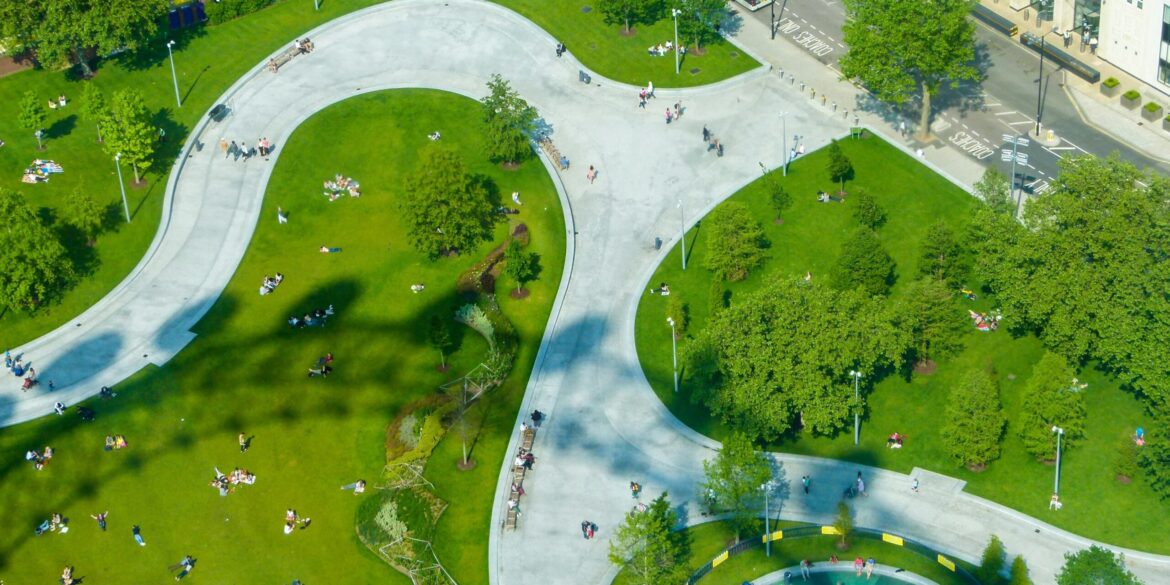In 2025, Miami continues to push the envelope in urban development by reimagining the concept of green spaces and their role in the city’s ecosystem. The increasing focus on sustainability, urban greenery, and community engagement has led to a wave of exciting new green spaces and eco-conscious projects across the city. As Miami grows, these new initiatives are reshaping its landscape, offering residents not just a place to escape but a sanctuary that fosters community and environmental health.
The Rise of Green Spaces in Miami
Historically, Miami’s rapid urbanization and focus on tourism meant that green spaces were often overlooked in favor of more commercial development. However, over the past decade, the city has started to see a shift. As climate change awareness has risen, so too has the understanding of the role parks, trees, and green infrastructure play in combating heat, improving air quality, and enhancing overall mental health. In 2025, Miami has placed a renewed emphasis on integrating nature into urban planning, creating green spaces that serve as refuges and community hubs.
Miami’s most recent efforts to green the city can be seen in the transformation of previously underutilized areas into lush public parks. These projects not only provide a much-needed respite from the heat but also contribute to biodiversity, making the city a healthier place for both residents and wildlife. One standout project is the transformation of the historic Overtown district, where a former industrial area has been turned into a series of interconnected parks designed to reduce urban heat and provide space for recreational activities.
The Importance of Urban Green Spaces
Urban green spaces are vital to the wellbeing of a city’s population. Studies have shown that they contribute significantly to improving air quality, reducing stress, and enhancing mental health. In densely populated cities like Miami, the benefits of parks and green spaces cannot be overstated. For example, Miami’s Central Park, a new development in downtown, is a 20-acre urban park that has not only become a hotspot for local residents but has also attracted tourists looking to explore the city in a more relaxed and natural setting.
Local government officials have pointed out that the benefits of these green spaces extend far beyond recreation. They can also help mitigate Miami’s growing concerns about climate change, particularly its rising temperatures and frequent heat waves. By increasing tree canopies and adding more green infrastructure, these projects are helping to cool urban areas, combat the heat island effect, and lower the need for air conditioning in surrounding neighborhoods.
The Role of Community Engagement
The transformation of Miami’s green spaces has been a community-driven effort. Local residents have been actively involved in planning and designing many of these spaces, ensuring that they meet the needs of the communities they serve. In neighborhoods such as Little Havana and Wynwood, community input has been key to ensuring that these parks reflect the cultural and historical significance of the area while also providing spaces for health and relaxation.
Additionally, Miami’s green spaces are being integrated into a broader network of urban agriculture and sustainability programs. Community gardens, urban farms, and eco-friendly urban design are becoming common fixtures, allowing residents to engage with nature and agriculture in an urban setting. These programs encourage sustainable food production, create opportunities for local businesses, and offer educational workshops on sustainability.
Eco-Conscious Urban Planning
In 2025, Miami’s approach to urban planning increasingly prioritizes sustainability. City officials have outlined a long-term vision that calls for further greening of public spaces, the incorporation of renewable energy sources, and sustainable building practices. Miami’s ambitious Green Miami initiative, for example, is aiming to integrate solar panels, energy-efficient lighting, and rainwater harvesting systems in all new green spaces by the end of the decade.
One such project that has gained attention is the new Bayfront Park Green District, a vast redevelopment effort designed to transform Miami’s waterfront into a green and sustainable community. This plan includes everything from solar-powered benches to electric vehicle charging stations. The park is also designed to handle stormwater runoff, a key factor in a city that frequently faces heavy rainfall and flooding. The green district aims to serve as a model for other cities in the region and around the world.
Major Green Space Projects in 2025
One of the most anticipated developments in Miami’s local green space scene is the opening of the Miami Riverwalk — a pedestrian-friendly park that stretches for several miles along the Miami River. This transformative project, which began in 2023, is nearing completion in 2025 and will provide both locals and tourists with unparalleled views of the river, along with walking, cycling, and jogging paths.
In addition, Miami’s Everglades Urban Park project has been one of the most talked-about environmental initiatives. A 500-acre park located near the heart of Miami, this project seeks to recreate a mini-ecosystem of the Everglades to educate the public about Florida’s natural environment and raise awareness about the importance of conservation. Through interactive exhibits and eco-tours, visitors will have the chance to learn about the state’s diverse wildlife and the urgent need to protect wetlands.
Another notable green space development is the redesign of Liberty Park, which, when completed, will feature new picnic areas, playgrounds, and shaded zones designed with local flora and fauna in mind. In a city that has seen explosive growth, these parks offer much-needed respite for Miami’s residents and create a sense of place and belonging.
Green Spaces for All: Making Parks Inclusive and Accessible
One of the most remarkable aspects of Miami’s green space movement is its focus on accessibility and inclusivity. Parks are being designed with people of all abilities in mind. The city has ensured that new parks are equipped with wheelchair-accessible pathways, sensory gardens for people with autism, and spaces for social gatherings that are welcoming to everyone, regardless of age, ability, or background.
Public art installations have also become a fixture in many of the city’s parks, allowing local artists to showcase their work while adding vibrancy to public spaces. In areas like Wynwood, known for its thriving street art scene, these installations add a layer of creative expression that complements the natural beauty of the parks.
Challenges and Opportunities Ahead
While Miami’s green space initiatives have been a success in many ways, challenges remain. The city’s rapid development, rising property prices, and frequent flooding due to climate change put pressure on these projects. Additionally, funding for such initiatives can be a challenge, as it requires substantial investment from both the public and private sectors.
However, city officials are optimistic that the continued success of these green space projects will attract more investment in the future. With growing awareness of the importance of sustainability, Miami’s green spaces are increasingly seen not just as recreational areas but as investments in the long-term livability and health of the city.
Conclusion: Miami’s Green Future
Miami’s focus on creating and expanding its green spaces is helping to create a more livable, sustainable city for its residents. By prioritizing nature and community engagement, these spaces are transforming urban living and offering a blueprint for other cities to follow. In 2025, it’s clear that the city’s green spaces are more than just parks — they are vital to the well-being of Miami’s residents and the future of urban development in the 21st century.
As Miami continues to grow and evolve, the expansion of green spaces will remain a cornerstone of the city’s development strategy. Whether it’s a community garden, a riverfront park, or an eco-friendly district, Miami is embracing the idea that green spaces are not just a luxury but a necessity for the health and vitality of urban life.
🔗 Source: Miami Green Spaces Initiatives

